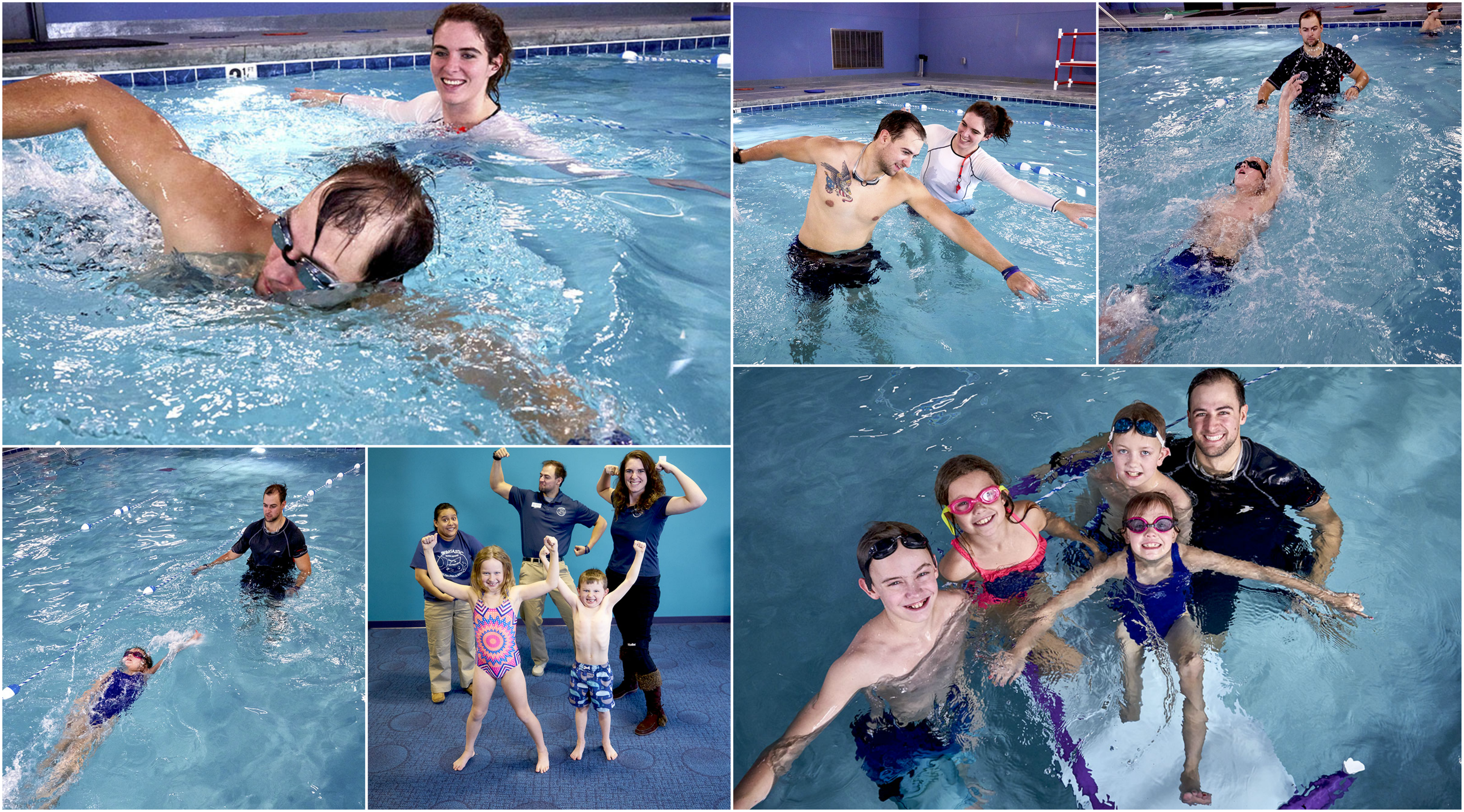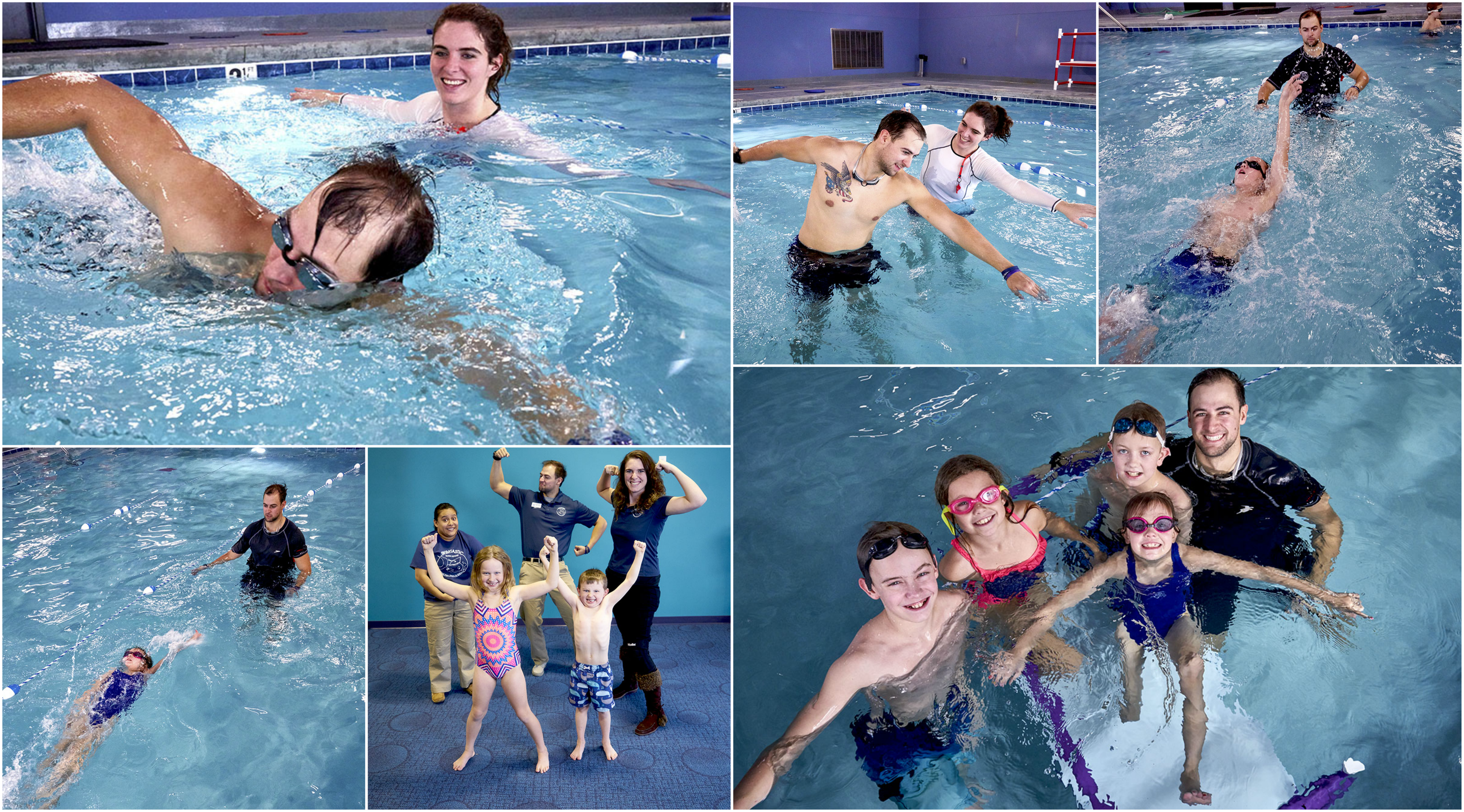
When most of our new families think swim lessons, they first associate water safety and drowning prevention tactics. Then as their swimmers get older and gain more swim skills, they contemplate swim outlets for sport and exercise. Remember, Swimtastic Swim schools provide this as well through our program Waves. When working out at the gym, in an exercise class, or outside, we prepare our bodies to work muscles and burn calories. The same goes for swim lessons. And what we would like our swim families to know is that no matter your level of swim skill, your body is going through a workout in the water.
Here are 5 tips to keep in mind as you prepare your body for a swim lesson:

- Swim lessons at all levels are a full body workout out. Meaning that when weightless in the water, your whole body is engaging muscles, even if you are sitting on the stairs or hanging on the wall, your muscles are firing.
- Swimming is an aerobic exercise, that provides vital air exchange. This is why Swimtastic Swim School curriculum focuses on blowing bubbles and breath control versus holding the breath while swimming. You can’t run well and hold your breath and the same goes for swimming.
- Swimmers do sweat in the water. Sweating in the water is a normal body reaction to maintaining body temperature. We might not see the sweat like we do while participating in other sports but that doesn’t mean it isn’t happening. So, it is very important to make sure to hydrate after swim lessons. Replenish your body fluids by drinking water or sports drinks.
- Nutrients are needed to fuel our bodies during swim lessons. You don’t want to work out starving because you are so hungry, but you do not want to swim on a full (just having eaten) stomach either. Lots of swimmers and athletes suggest bananas for their nutritional value and they aid with muscle cramping.
- Muscle Memory is needed to become a strong swimmer. Taking care of your muscles in and out of the water will help a swimmer become stronger and more proficient. The body composition of a swimmer is important to how they progress during a lesson. The Swimtastic Swim School curriculum focuses on technique from the start. Learning the right stroke from the beginning will make swimming become more routine for the body. Similar to riding a bike, once you learn you will always know how to ride. Consistency is key with a training/lesson recommended at a minimum of once per week for 30 minutes.
In summary, swimming is a sport and every lesson is a workout. You can prep your body to have a great lesson in the water. At Swimtastic Swim Schools, we take the swimmer’s muscles into consideration, especially when we hear that a parent feels their child has regressed. This usually happens when the swimmer has missed their lessons or are not attending consistently every week. During a class it is not uncommon to see a swim “taking a break” in-between turns and swim sets, to catch their breath and give their muscles a break. Swimming is tiring, especially when your swimmer body is changing and getting stronger. A difference in a swimmer’s body composition, a growth spurt or weight gain/loss, will change the way the muscles react while swimming. This is why it is so important that swimmers of all ages refresh their swim skills yearly. Don't forget to stretch and nourish your body after each swim lesson workout too! We'll see you at the pool!

.png?width=988&name=ST_2019Jan-Feb_Webslider%20(1).png)



